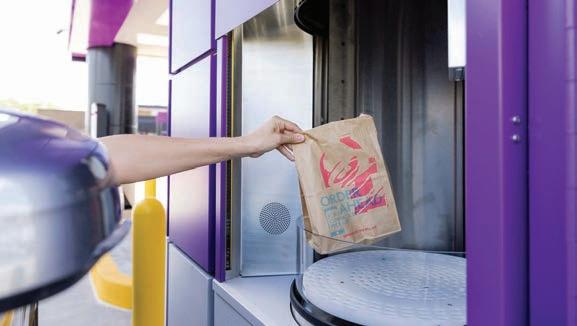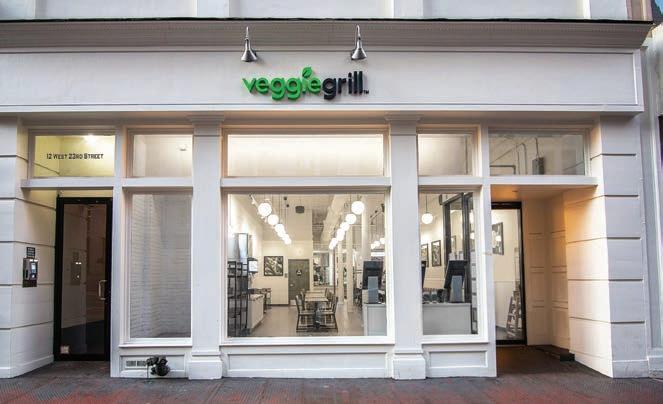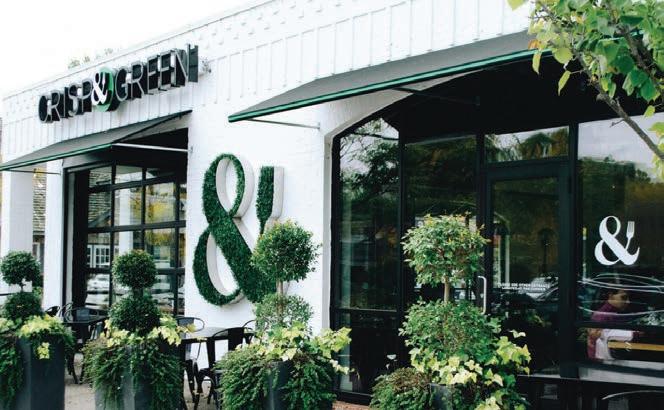
4 minute read
FAST FOOD SLIMS UP TO BULK UP
from X Team Insights 2023
by xteamretail
Once upon a time, fast-food restaurants were best known for selling hamburgers, fried chicken or pizza. The food was plentiful, relatively inexpensive and served quickly. On the downside, fast food wasn’t particularly healthy.
Eventually, this led to a bevy of criticisms against the quick-service restaurant (QSR) sector. The food was bad for you. The lack of nutritional value and assembly-line preparation methods translated into poor health and chronic disease. The ingredients weren’t always responsibly sourced. And from an environmental perspective, the methods used to process meats, chicken and potatoes could be unsound.
Advertisement
In response, the QSR sector started to offer healthier or “cleaner” offerings. This means both a change in menu and, in many cases, a change in the restaurants themselves. “The healthy trend among QSRs has been going on for about two decades, with the rise of fast-casual restaurants such as Chipotle, Panera and Sweetgreen,” said Boyd Rudy, Team Leader and Associate Broker with MiReloTeam
Demand for healthy fast casual alternatives has resulted in several new brands emerging on the market with ambitious expansion plans that would rival traditional QSR behemoths. Steele Brands, which operates a few healthy QSRs including Crisp & Green, has a pipeline of 250 new locations. WOWorks, which runs brands including Saladworks and Frutta Bowls, has more than 360 sites across the country. Another growing vegan concept is Veggie Grill, which operates 35 locations in California, Oregon, Washington, Illinois, Massachusetts and New York City.
Keller Williams Realty Living. “Consumers’ growing awareness of nutrition and health, as well as their desire for quality, fresh ingredients and higher-end menu items, drove this trend, and continues to do so.”
There have been noticeable changes at major QSR brands over the past several years. Leading fast food chains like McDonald’s and Taco Bell pledged to use more natural products such as antibiotic-free meat, cage-free eggs and lowercalorie options like salads, grilled chicken and fresh vegetables.
Increased attention to health and wellness coming out of the pandemic might have given an extra lift to the healthy foods sector. In the aftermath of COVID-19, said Bryan Cornelius, principal with RetailUnion, “More people started hitting the gym; we’ve seen an explosion of fitness clubs in the market.” This, consequently, has brought with it a general desire for healthier food choices.
Restaurants are bulking up their existing menus with healthier alternatives to provide consumers with what they want while helping to improve sales margins. “Some are adding healthier options to their existing menus, such as salads, grilled chicken sandwiches, veggie/fish burgers and sweet potato fries,” said Eran Mizrahi, Co-Founder and CEO of restaurant supplier Ingredient Brothers. “Others are introducing entirely new menus focusing on options like smoothie and juice bars or vegetarian and vegan fast-food restaurants.”
These offerings accomplish two things. First, they give the consumers what they want. Second, it means more health-conscious consumers might be willing to buy food from previously avoided QSRs.
Velocity Group President Dave Cheatham explained that established chains like Panera Bread and Chipotle started to source their ingredients locally, and more responsibly.
“Panera, Chipotle and the other health-conscious restaurants are catering to people that really want quality food,” he said.
In other words, the restaurant chain is taking responsibility for a healthy food supply chain. This appeals to customers that want better, more ethical fast-food options. “The younger generation is driving this trend,” Cheatham explained. “They’re the Whole Food shoppers. They care about sourcing.”
Demand for these alternatives has also driven the growth of the “healthy fast casual” niche— eateries that have made the trend a part of their identity and used it to differentiate themselves from competitors. These emerging players, saw a chance to push forward with expansion plans as they sought to fill diners’ growing appetite for clean eating.
Several new brands have emerged on the scene and have launched major expansion plans. Take Steele Brands, for instance, run by fitness industry veteran Steele Smiley. Operating under the notion that “people shouldn’t have to choose between a quick meal and a healthy one,” he opened his first Crisp & Green healthy fast-casual restaurant in Minnesota in 2016. By 2023, Smiley had grown Steele Brands to include two additional concepts—vegan eatery Stalk & Spade and Paco & Lime, a modern Mexican concept. The platform currently has a pipeline of 250 new locations, most of which will be Crisp & Green stores, in about 25 states.


Salad and Go, a self-described “emerging QSR industry disruptor committed to revolutionizing fast food,” is also expanding at a rapid clip. The quick-service, drive-thru-only concept has more than 80 locations spread throughout Arizona, Texas, Oklahoma and Nevada. The company is now focused on expanding its presence nationally with the goal of having more than 125 locations by the end of this year.
Then there’s WOWorks, which has been aggressively expanding its better-for-you restaurant concepts since its formation in 2020. The umbrella company oversees several brands, including Saladworks, Frutta Bowls, Garbanzo Mediterranean Freshand Zoup! Eatery, among others. Between its brands, WOWorks has more than 360 U.S. locations.

Another concept is Veggie Grill, which operates a chain of vegan fast casual eateries in 35 locations in California, Oregon, Washington, Illinois, Massachusetts and New York City. Launched in 2006, the family of brands also includes plant-based burger concept Stand-Up Burgers, vegan Mexican eatery Más Veggies Vegan Taqueria, and health-focused, Vegan Bowls for All.
Demographics and psychographics play a huge role in determining where restaurants are placed, given socioeconomic and cultural differences between various regions of the country. In addition to cost factors, the types of cuisine matter, too. “Some regions have specific preferences for certain types of healthy QSRs,” explained Keller Williams’ Rudy. “This might include a Mediterranean cuisine, which tends to be more popular along the West Coast and in the Southwest.”
As long as the demand continues, healthier options aren’t going anywhere. “Young people continue to be more conscious of their diets and food additives,” explained RetailUnion’s Cornelius. “They’re not automatically going to go to the regular fast-food options they might have previously chosen.”
Additionally, the increasing use of food delivery services—think DoorDash, Uber Eats and Grubhub—is making it easier than ever for consumers to order healthy options. This, in turn, will further drive the trend toward healthy food demand in fast-food locales.
Meanwhile, on the restaurant side, Ingredient Brothers’ Mizrahi explained that ongoing consumer demand, cultural preferences— and even government regulations—will all help provide the impetus for a move toward healthier fast-food options.
Restaurants will want to meet consumer demand while attracting new customers, he said. “As more people become interested in healthy eating,” Mizrahi commented, “QSRs that fail to offer healthy options risk losing market share to competitors who do.” X










